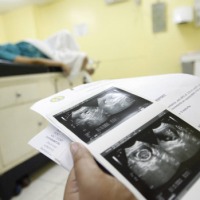Carte Blanch- Anup Kumar Dutta
The reality of gender discrimination against women, at infant, children and adult levels, is one of the all too many clouds which darken the touted image of “India Shining.” Our society since time immemorial has been a male-dominated one.
Despite endeavours of the state, primarily legalistic, as also of a pro-active judiciary and efforts of reformist segments within society, to bring about gender equality not much of a dent has been made in an age-old mindset. The societal structure, prevalent customs, ethical mores related to issues such as marriage, the economic mechanism — everything continues to be designed to ensure the subservience of women.
Thus, one need not be surprised that the latest data released by the United Nations Department of Economic and Social Affairs (UN-DESA) for 100 countries over 40 years starkly reveals the truth that an Indian girl is 75 per cent more likely to die between one and five years than an Indian boy, thereby making our country earn the dubious distinction of having the highest gender differential in the world.
For what it is worth, newly released data from the Union home ministry has indicated a drop in infant mortality rate (IMR) in India to a national average of 47 to every 1,000 births, though all states have not been able to maintain this.
While Chhattisgarh and Uttar Pradesh record the highest infant mortality rate in the country, states like Assam with 58 and Bihar with 48 per 1,000 have yet to catch up. It needs to be noted that the welcome decline in infant (0-1 years) and child (1-5 years) mortality is a global phenomenon and brought about by improved medical facilities and greater hygienic awareness.
The disturbing factor is that, according to the UN-DESA, while across the world there has simultaneously been a drop in female infant and child mortality than in male, in India such a trend has not been maintained. It is cold comfort that India’s economic rival China is the only other country in the world which shows a similar negative trend against the girl child. In the developing world as a whole there are 122 male infant deaths against every 100 female infant deaths, but in China, the figure is 76 male infant deaths against 100 female infant deaths.
India, with 97 male infant mortality and 56 male child mortality against every 100 female infant and child mortality fares somewhat better, but not enough for a nation which aspires towards a truly gender equal society. Even our smaller neighbours with differences in demographic and religious characteristics have far more positive figures for female mortality than us.
In Pakistan, for example, despite that nation being perceived by the West as a country where women do not enjoy status equal to men, the ratio of male infant mortality is 120 and male child mortality 100 compared to every 100 female infant and child mortality. Sri Lanka, with a ratio of 125 male infant mortality and 111 male child mortality, fares even better.
It has been an established biological fact that the female of the species is far hardier and better adapted to survive than the male. Thus, given equal familial and societal importance and share in the resources, logic dictates that the girl child should be more likely to survive between the age of one and five than the boy child. This is a clear indication that broadly in India, the girl, child of a lesser god, from an early age confronts deprivation in every sphere, whether it is in nutrition, education, healthcare. To compound matters, discrimination, in fact, begins at the very pre-natal stage, especially in North India, where the blight of female foeticide even today remains endemic in spite of stringent laws being enacted against it.
Equally unfortunately, sex selection is not confined only to the illiterate and underprivileged section of society, but is also prevalent among the educated and more affluent urban middle-class. A segment of the medical fraternity has conspired to ensure that pre-natal, sex-selective abortion is easily available notwithstanding laws enacted to combat it. For instance, medically diagnosed possible danger to a mother at childbirth is offered as a convenient alibi for sex-selective abortions, something that the authorities are incapable of combating legally. If we take into account the number of unregistered sex-selective abortions in the country, the data offered in the UN-DESA report on India regarding female infant mortality would be far worse!
A similar, pagan mindset also ensures that girls are discriminated against in the post-natal phase in matters of nutrition and healthcare, though statistics point to the prevalence of such a bias more among the underprivileged segment of Indian society. Thus, a sustained campaign against sex selection is not the only solution towards turning the statistics in favour of a girl child. The issue is far more complicated than it may appear, for there are too many ramifications — social, physiological, psychological and so on — for a simplistic appraisal or endeavour to suggest measures for redress.
However, one of the facets stands out and must be the focus of attention. As in most other aspects of our society, the economic factor lies at the core of discrimination against the girl child. This is made more evident by the relative absence of gender discrimination amongst tribal communities, wherein women contribute equally as men in the familial economic mechanism and are thereby invested with equal status. In an area like the Northeast, where tribal communities predominate, the respect given to women is traditional and is reflected in lower girl infant and child mortality rate as compared to those of a boy. It hardly needs to be pointed out that in some communities in this region the matriarchal system prevails, which invests women with an importance that societies in other parts of India might find difficult to envisage.
On the other hand, the girl child is conceived to be an economic burden in many parts of India, particularly in the northern states, where gender discrimination is blatantly evident. Being physically weaker, girls are seen to be less adapted for tasks needing brawn, which is an integral requirement for useful contribution in communities devoted mainly to agriculture. The need to find suitable life mates for daughters in a system where arranged marriage is the custom, as also the need to raise dowry, adds to the so called “burden” on parents even amongst the urban middle-class.
The key to bringing about a change in perception is, therefore, initiation of means of empowerment of a girl child where she is given a level playing field and enabled to contribute to familial economy. Legislations by themselves not being enough, providing her with resources, particularly in the spheres of education and job opportunities is an essential requirement. Crass as it may sound, there has to be an endeavour to transform a girl into an economic asset rather than a burden if she is to be raised from her current status as a child of a lesser god.
Much progress has been achieved in this direction, but far more has to be done not only by the government, but also by enlightened sections in society. The media has an enormous role to play, as do non-government organisations. It is ironic indeed that a nation in which the female principle has traditionally been revered invests lesser importance to a girl child in actual practice. The very fact that, six decades after Independence, our legislators remain chary about reserving seats for women in the political arena is a telling indicator of the miles we have yet to travel towards eradicating gender discrimination in our country






